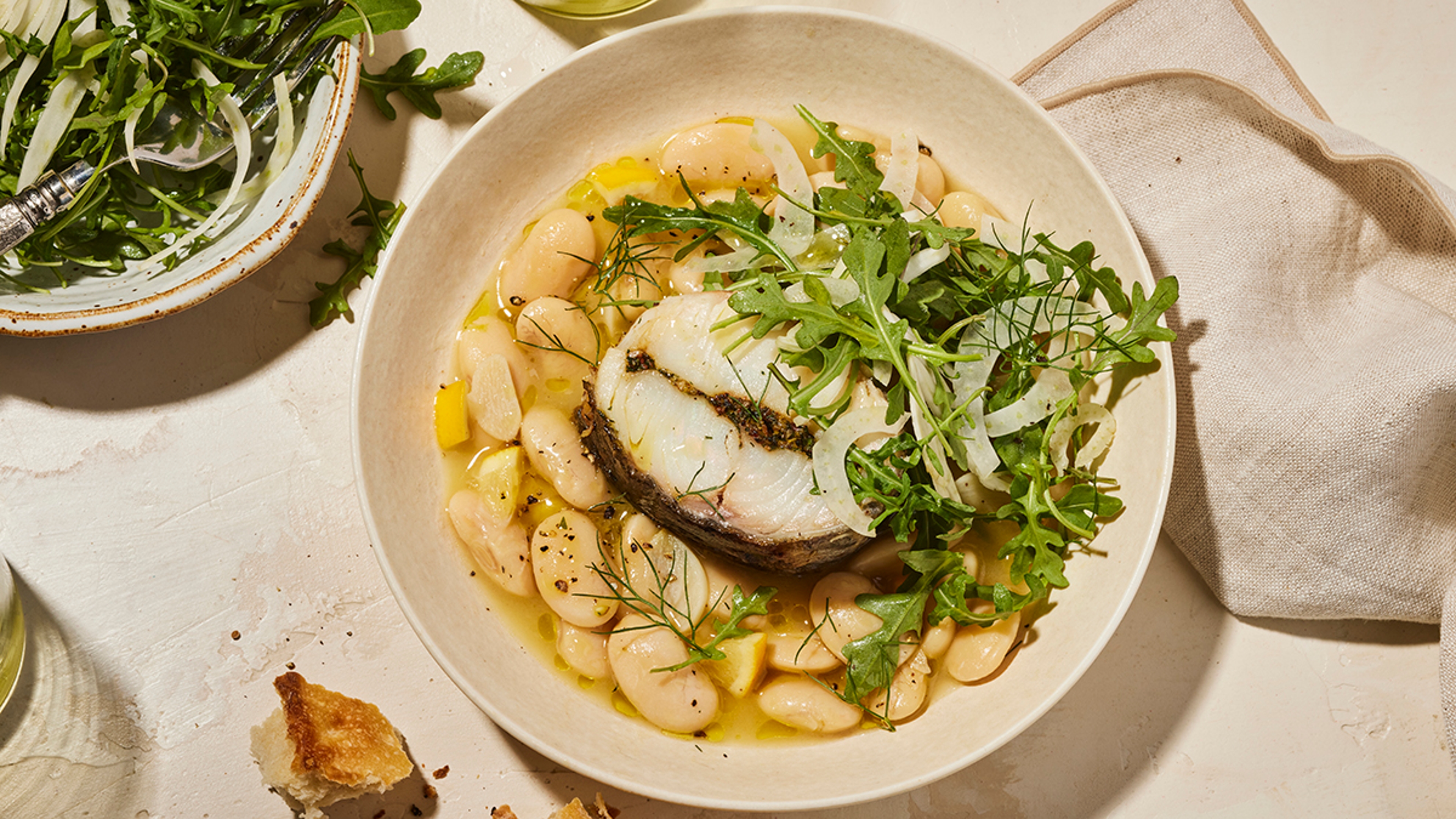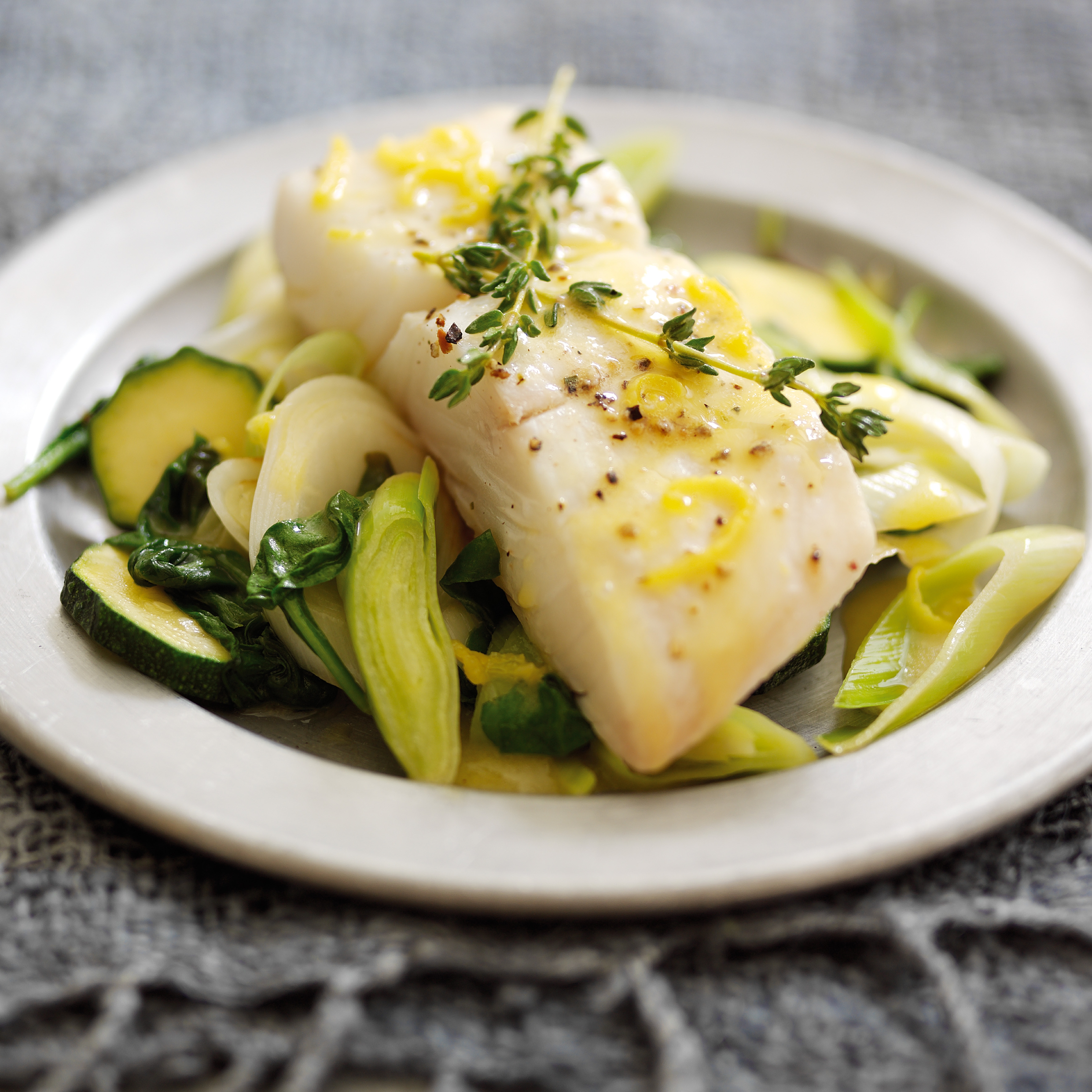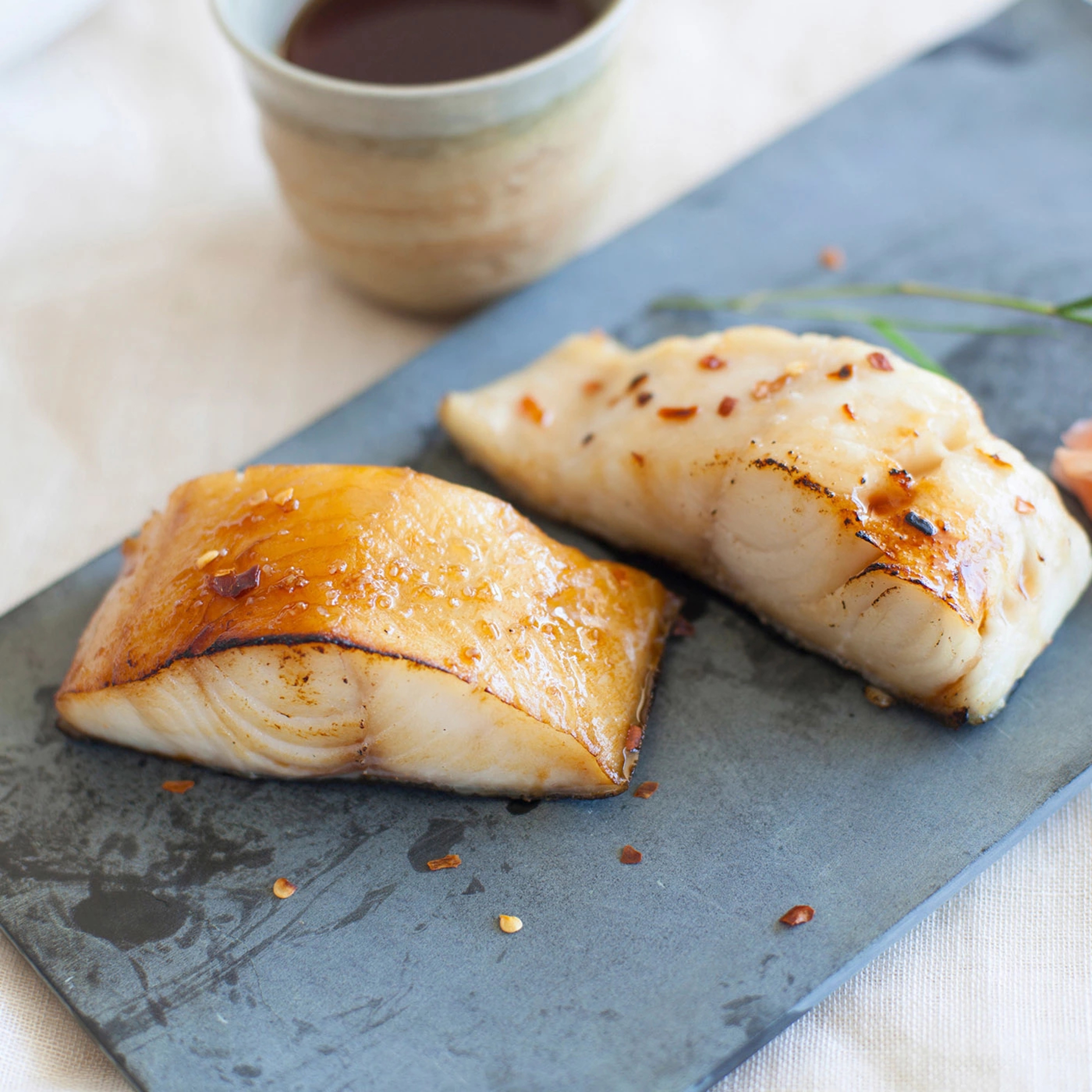September’s Featured Catch: Sablefish
The never-ending promise of sablefish — which swims under the aliases black cod, butterfish, and sable — and why it should be in your recipe repertoire.
Aug 26, 2024
Sablefish goes by many names, including black cod, but it may soon be known as something else: the silver bullet, thanks to its potential as a sustainable and healthful seafood option.
This easy-to-cook and delicious-to-eat fish boasts a high oil content in beneficial omega-3 fatty acids, making it an exceptional protein. Despite its merits, sablefish remains underrated, ranking well below tuna, salmon, shrimp, and other popular seafood in the United States. This presents a prime opportunity for consumers to discover a sustainable, wild-caught fish that’s still surprisingly under the radar.
Many savvy seafood enthusiasts know miso black cod, a dish popularized by Japanese-Peruvian chef Nobu Matsuhisa and now featured on menus worldwide. Yet, sablefish still retains an air of mystery — one we’ll uncover here. We’ll also share why one of the key individuals behind September’s Vital Choice Featured Catch is so excited about the potential of sablefish.
“I believe that if we stay on track, sablefish will become one of the most popular fish in the U.S. market,” says Scott Blake, CEO and co-founder of Copper River Seafoods. “And I see that happening within the next five years.”

What’s in a fish’s name?
Before we explore the deep waters where sablefish dwell, let’s clarify its taxonomy. Despite its name, sablefish isn’t black (its skin ranges from light to dark gray), nor is it a cod. Scientifically, it’s known as Anoplopoma fimbria. It’s also called butterfish, a nod to its rich taste and texture, and simply sable or smoked sable in Jewish appetizing stores, known for their smoked seafood like lox.
While other cultures have their own names for it, “sablefish” has become the preferred term in the United States, likely because it evokes a sense of luxury and silky-smooth texture. However, the name “black cod” remains popular, thanks to the fish’s association with a renowned dish.
READ MORE: Sablefish: Silky, Smooth & Delicious
Calling it one of the best wild fish to eat in the world, Blake likens sablefish to another meaty, flavorful white fish that also goes by a made-up nickname: Chilean sea bass.

Playing hard to catch
Scott Blake’s son, and fifth-generation fisherman, Matthew Blake, is one of the 100-plus fishermen who make up Copper River Seafoods’ sablefish fishery. He and a crew of four to five spend a day traveling to deep waters off the Alaska coast, from the Aleutian Islands to Southeast Alaska, on 48- to 58-foot boats.
They fish for three days using hooks and pots on long lines. The “pots” are like expandable mesh bags that are called “Slinky pots,” in reference to the Slinky toy. They are attached to long lines and dropped into waters 300 fathoms (1,800 feet) deep. This method, developed in the past decade, has revolutionized sablefish fishing by preventing predators from intercepting the line-caught prey. “It totally changed the face of the fishery,” Matthew Blake says.
The sablefish are brought on board and removed from the pots often while still alive. According to Scott Blake, the average size of the sablefish they harvest is between two and seven pounds. On shorter two- to three-day trips, sablefish are often held alive in refrigerated seawater tanks, then processed upon delivery to Copper River Seafoods.
Sablefish season can run from early spring to late fall, but as Matthew Blake notes, he and others tend to use the shoulder seasons, when they’re not busy fishing for more lucrative salmon. “You’re fishing in the winter or in [early] spring, so it’s dangerous for sure,” Matthew Blake says. “There are chances of getting washed over. You’re way offshore, like 40 miles, and nobody’s coming to save you, or if they are, they’re hours away.”
“Went to Japan or went into a can”

Why have we only recently become aware of this seafood’s many charms? According to Blake, who co-founded Copper River Seafoods with other Alaska fishermen — as he discussed in our April’s Featured Catch post on halibut — the domestic market for sablefish barely existed until recently.
Like salmon, which once “went to Japan or went into a can,” as Blake puts it, approximately 90% of sablefish was primarily exported to the Japanese market from U.S. fisheries. The fish’s habitat is primarily along the northwestern United States and British Columbia waters, as well as off of Russia’s eastern coastlines.
Unlike salmon, sablefish don’t yet command high prices, especially with the Japanese economy continuing to struggle. As a result, Scott Blake says that Copper River Seafoods and others need to create a domestic market for sablefish, as they did with wild Alaskan salmon.
There’s good reason to look at sablefish as a sustainable and traceable seafood. The fishery is certified under two independent certification standards for sustainability: the Marine Stewardship Council (MSC) and Alaska Responsible Fisheries Management (RFM). And like halibut and salmon, the catch is monitored, with vessels required to purchase quotas set by state and federal agencies.
This is especially important at a time when consumers still don’t have access to responsibly sourced seafood. An August 2024 opinion essay in The New York Times (subscription may be required) from authors Paul Greenberg and Carl Safina noted, “U.S. fisheries may be much improved, but up to 80% of the fish and shellfish on American plates are imported.”
For Scott Blake, the sablefish could be the silver bullet that solves this problem. “Our goal at Copper River Seafoods,” he says, “is to bring this great fish to the marketplace to promote what I think is one of the top three best seafoods in the state of Alaska, and definitely the best groundfish that has enough volume, and is sustainable, to be mainstream.”
The deliciousness speaks for itself
Just because sablefish has a lot going for it doesn’t mean people will eat it. Yet, as Nobu’s ever-popular and oft-copied miso black cod dish shows, sablefish is ready for prime time. The technique to make that greatest-hits of Japanese cuisine is simple: A sablefish fillet marinates in a mix of mirin, sake, sugar, and white miso, then gets broiled or seared on a stovetop and baked. But while the fish takes well to marinades and sauces, it’s also great when simply steamed and seasoned with salt and pepper.
“That’s how we eat it every day on the boat when we’re fishing,” Matthew Blake says.
READ MORE: Gigi’s Orange Sablefish Recipe
His father echoes the call for simplicity when it comes to sablefish. “I put it on the grill, skin-side down, and I put a little butter, salt and pepper, and lemon pepper on it, and it’s fantastic.”
They both point out that due to sablefish’s high oil content, it won’t overcook and dry out like other fish.
Take a bite of sablefish, black cod, butterfish, or whatever you call it, and you may end up quoting that classic A Tribe Called Quest song to describe it: “It’s like butter, baby.”







